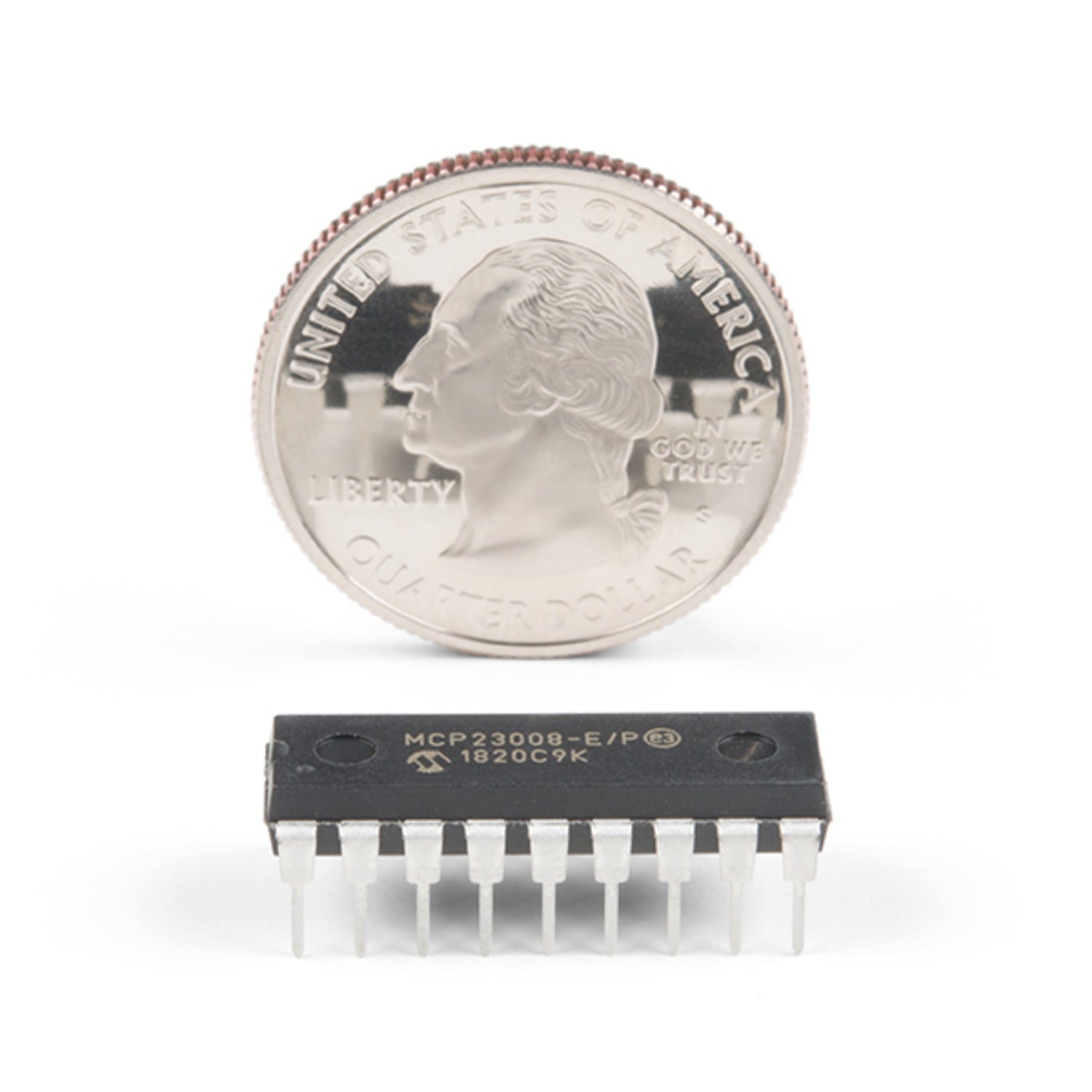Enhance your microcontroller's capabilities by adding eight extra pins with the MCP23008 port expander. This expander uses just two I2C pins that can be shared with other I2C devices, giving you eight general - purpose pins in return. You have the flexibility to set each of these eight pins as an input, output, or input with a pull - up. There's also an external pin for interrupts when any input changes, so you don't need to keep polling the chip. Operate this chip within a voltage range of 2.7 - 5.5V, suitable for both 3.3V and 5V setups. Each I/O pin can sink or source up to 20mA, making it great for powering LEDs. If you need more power, pair it with a high - power MOSFET. Its DIP package allows it to easily plug into any breadboard or perfboard. You can set up to eight unique I2C addresses by tying the ADDR0 - 2 pins to power or ground. That means eight chips can share a single I2C bus, providing a whopping 64 I/O pins!

Using the MCP23008 I/O expander is easy. First, connect it to your microcontroller. You'll only need to use two I2C pins, and these can be shared with other I2C devices on your board. Once connected, you can start configuring the eight general - purpose pins. Decide whether each pin should be an input, output, or input with a pull - up based on your project needs. If you want to be notified when an input changes, connect the external interrupt pin. This way, you don't have to constantly check the chip. Make sure to supply a voltage between 2.7V and 5.5V. It works well with 3.3V or 5V setups. If you're powering something like LEDs, the I/O pins can handle up to 20mA. But if your device needs more power, use a high - power MOSFET. The DIP package makes it convenient to plug into a breadboard or perfboard for quick prototyping. When setting the I2C address, tie the ADDR0 - 2 pins to power or ground. You can have up to eight unique addresses, allowing multiple chips to share a single I2C bus. As for maintenance, keep it clean and free from dust. If you're storing it, put it in a static - free environment to avoid any damage to the sensitive components.